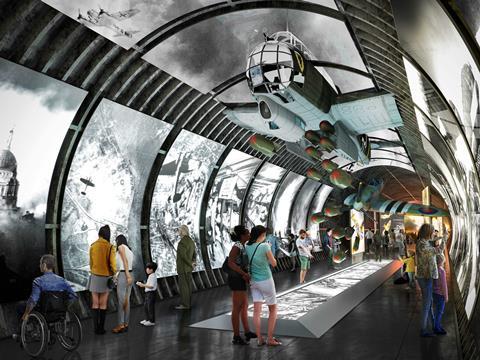Scheme still needs Camden green light for final sign off
Wilkinson Eyre’s plans to redevelop a network of Second World War tunnels 40m beneath central London into a visitor attraction have been approved by City of London planners.
The proposals still need the green light from neighbouring borough, Camden, which is due to vote on the plans on 11 July.
The scheme will convert the tunnel complex, which extends to more than 8,000sq m, into a visitor and cultural attraction that is expected to draw in up to two million visitors a year.

The buildings at 38-41 Furnival Street will be integrated, with the ground floor containing an area for exhibitions and heritage experience that reflects the history of the City.
The scheme will also include an underground bar within the Camden area of the site.
Known as the Kingsway Exchange, the tunnels were built in the early 1940s as shelter for Londoners during the Blitz. It later served as the headquarters of a covert Special Operations Executive branch that employed professional saboteurs to aid the British war effort.
> Also read: Wilkinson Eyre lodges plans for spy tunnels attraction
The complex continued in use during the cold war and even underwent an expansion that created London’s deepest licensed bar. Author Ian Fleming worked in the tunnels in the 1940s, and they were the inspiration for James Bond’s “Q Branch”.
Under Wilkinson Eyre’s plans, which have been designed for Australian banker Angus Murray, a vacant building and office building at Furnival street will be demolished and reconstructed in order to link the two buildings internally and to use the ground floor as the main entrance to the attraction.
The demolition of these buildings has been deemed “acceptable” by the City’s planning officers.
The new buildings will deliver a retail area, including a gift shop in the first and second floor and workspace on the fourth level for staff.
Historic England noted that the scheme sits near Barnards Inn, where solicitors traditionally practiced and underwent training until the 19th century. The body said that scheme does not physically interfere with the inn but recommended that extra care should be made to maintain ease of access to the building.
















No comments yet